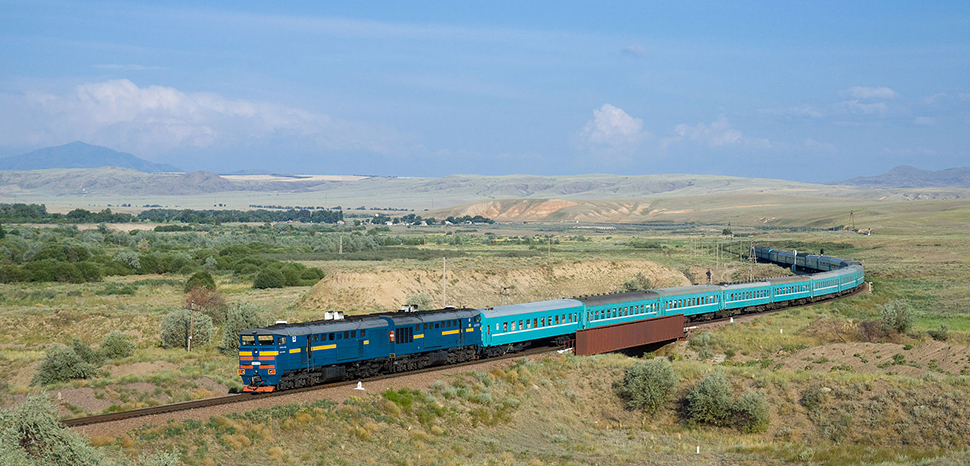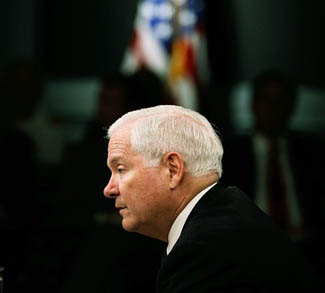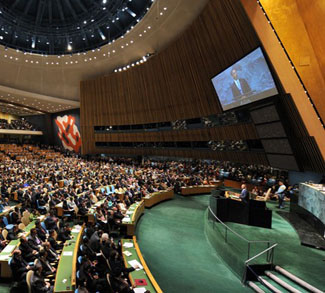As the war in Ukraine continues, the world is experiencing new energy and food crises, and sanctions on Russia mean that East-West and West-East commerce must find routes that reach Europe while simultaneously avoiding Russian territory. In this new reality, global supply chains are not only adapting to the dramatic effects of COVID-19 that have shaken the world for the past two years but also the war, which has brought new challenges.
One alternative route that has gained prominence in recent months is the Trans-Caspian International Transport Route (TITR), commonly known as the Middle Corridor, a joint venture composed of Azerbaijan, Georgia, Kazakhstan, and Turkey. The relationship between Kazakhstan and Azerbaijan is at the heart of this Trans-Caspian initiative.
Bilateral ties between Baku and Nur-Sultan
Since gaining independence from the Soviet Union, Azerbaijan and Kazakhstan have generally enjoyed close relations. Both have Turkic cultural backgrounds, are members of the Organization of Turkic States, and are Caspian Sea neighbors. In 2018, all five Caspian Sea states (Azerbaijan, Iran, Kazakhstan, Russia, and Turkmenistan) signed a document in Aktau, Kazakhstan, that solved long-standing border disputes over this critical body of water.
Diplomatic relations are cordial. Due to the May 2022 independence celebrations of the Caucasus nation, Kazakhstani President Kassym-Jomart Tokayev sent a letter to Azerbaijani President Ilham Aliyev. In the letter, reproduced by Trend news agency, President Tokayev describes Azerbaijanis as “brotherly people” and his confidence in “forthcoming negotiations … to discover fully the huge potential of bilateral interaction.”
President Tokayev mentioned the Middle Corridor during the July meeting of Central Asian heads of states in Cholpon-Ata, Kyrgyzstan. In his remarks, Tokayev said:
Even a cursory glance at the map shows the unique geographical location of Central Asia at the junction of Russia, China, South Asia, the Middle East, and the South Caucasus. In the new geopolitical realities, the role of our region in promoting and developing transcontinental trade is increasing rapidly. In these circumstances, Kazakhstan is actively developing the Trans-Caspian International Transport Route. Since 2017, the number of transported containers along the routes of this corridor has increased almost threefold, to 25,000.
Similarly, Azerbaijan’s Minister of Digital Development and Transport Rashad Nabiyev, during his visit to Ankara in June 2022, reportedly noted “transport links between Azerbaijan and Kazakhstan are developing [while] The unification of tariffs along the corridor, simplification and the harmonization of regulatory, and customs procedures for transit cargo are important.”
The mutual interest in the Middle Corridor, thus, makes maintaining cordial relations a priority. In early July, Azerbaijan’s Minister of Economy, Mikayil Jabbarov, met with the Astana International Financial Centre Governor, Kairat Kelimbetov. The TITR was discussed. A month earlier, in June, the governments of Azerbaijan, Kazakhstan, and Turkey established a working group on the Middle Corridor.
Moreover, since the war in Ukraine, commercial relations have grown considerably. Over the last year, bilateral trade has increased threefold and reached more than USD330 million. The trade turnover in the first five months of 2022 has already reached USD161.4 million. Exports of wheat, rice, railway locomotives, and flat-rolled steel have significantly increased. In addition, Kazakhstan started supplying Azerbaijan with ferrous metal scraps, rails, and mineral fertilizers.
The two governments have also signed several agreements in recent years to cement trade relations. For example, Azerbaijani Energy Minister Parviz Shahbazov noted in July that the “Comprehensive Program on Development of Cooperation between the Republic of Azerbaijan and the Republic of Kazakhstan for 2022-2026,” which is currently in negotiations, “will be a roadmap for the development of dialogue between the countries” for the immediate future. He also invited Kazakhstani investors to benefit from the investment opportunities and favorable business conditions in the Alyat Free Economic Zone.
Nur-Sultan, Baku, and The Middle Corridor
Close bilateral relations between Azerbaijan and Kazakhstan are very relevant to the success of the Middle Corridor. Let us look at the situation another way. The Corridor connects the Caucasus with Central Asia via the Baku International Sea Port (Azerbaijan), Port Aktau, and Port Kuryk (Kazakhstan). Thus, it becomes clear that cordial relations between two countries are vital for the Corridor’s effectiveness.
Given the war, the Trans-Caspian Corridor has become a mandatory replacement for the standard route via Russia and Belarus. While less than 16,000 containers passed through it in the first quarter of 2021, 19,500 units were registered in the first quarter of 2022. Container traffic along the Trans-Caspian corridor in the first three months of 2022 increased by 28% compared to last year. While the capacity of cargo transshipment through the Caspian Sea is about 135 million tons per year, today, only 30 million tons of port facilities are used. Only 20% of the seaport capacity of the Caspian countries is used for international cargo traffic, argues one report.
Kazakhstan and Azerbaijan are upgrading their transportation infrastructure to enhance the movement of goods. The ports of Baku and Aktau are undergoing considerable expansion. Azerbaijan plans to increase the capacity of its port: the second phase of development has been completed to expand transshipment capacity to 25 million tons of cargo and 500,000 TEU containers. At the same time, Kazakhstan plans to build new facilities in the Caspian Sea to increase export potential. The new cargo terminal will be constructed in Aktau – companies and container operators Maersk, MSC, and COSCO Shipping will reportedly be involved in the construction.
The cargo throughput capacity of Aktau port, the largest in Kazakhstan, is about 15 million tons per year. Nur-Sultan aims to “increase the volume of traffic across the Caspian Sea to 10 million tons by the end of this year,” according Asia News, by re-orientating about four million tons of export cargo to the Transcaspian route.
Sanat Kushkumbayev, Deputy Director of the Kazakhstan Institute for Strategic Studies (KazISS), has argued that:
The headquarters of the Trans-Caspian International Transport Corridor is located in Nur-Sultan. Therefore, we are the beneficiaries and are extremely interested in the large-scale operation of the transport route. Two hundred thousand containers per year can be transported along this route. We will be able to transport not only container transportation, but also petrochemical products, ferrous and non-ferrous metals. This is a promising important highway uniting the Eurasian countries.
Interest from Brussels
Europe is very interested in the Middle Corridor. During an 18 July meeting in Baku between European Commission President Ursula von der Leyen and President Aliyev, the European policymaker noted: “the Economic and Investment Plan has the potential to mobilize up to EUR 2 billion in additional investments. It is already at work, supporting round about 25,000 Azeri small and medium companies, and making the Port of Baku a sustainable transport hub.” Thus, Brussels recognizes the importance of Baku port as it is a connecting hub to Central Asia.
The Middle Corridor has also been discussed in Brussels as Europe seeks alternatives to Russia. In June, a roundtable on transport cooperation between Kazakhstan and the European Union was organized in Brussels, with representatives from Kazakhstan Temir Zholy, the Trans-Caspian International Transport Route, the Transport and Tourism Committee of the European Parliament and the Embassy of Kazakhstan in Belgium.
Kazakhstan looks to the sea
It is important to remember the Russian government’s decision to shut down the CPC pipeline in early July, which Kazakhstan utilizes to export some 80-90 percent of oil to Europe. While the decision was reversed in mid-July, this incident set a problematic precedent.
Specifically, this incident motivated the Kazakhstani government to utilize the Middle Corridor to move oil supplies to Europe as Nur-Sultan realized the importance of the Corridor in this new world. Thus, “the priority direction is the Trans-Caspian route. I instruct KazMunaiGas to work out the best option for its implementation, including the possibility of attracting investors from the Tengiz project. Furthermore, the government and Samruk-Kazyna should take measures to increase the capacity of the Atyrau-Kenkiyak and Kenkiyak-Kumkol oil pipelines,” President Tokayev said in July.
The Kazakhstani President also instructed the government to turn the seaports of Kazakhstan into the leading hubs of the Caspian Sea. “Kazakhstan has never been a maritime country and therefore has not fully utilized the possibilities of maritime transportation. Now is a different time. I set a strategic task for the government – to transform our ports, turning them into one of the leading hubs of the Caspian Sea,” he said. Tokayev also added the need to strengthen the Kazakhastani navy and create a container hub in Aktau.
Challenges
One critical issue is that current estimates regarding future cargo transfers across the Caspian from Kazakhstan to Azerbaijan (and vice-versa) should be viewed with some skepticism. This is because the success of the Middle Corridor will depend not solely on infrastructure upgrades but also developments out of the control of Corridor states.
For example, the war in Ukraine could be solved soon, or new deals could be agreed upon regarding energy and cargo transfer through Russian territory (an unlikely scenario). Moreover, European customers could find other suppliers of goods that Central Asian states and China produces. Additionally, new supply chains could be developed that do not pass through all current Middle Corridor members.
Moreover, given the rising demand for the Middle Corridor, Kazakhstan must increase its fleet of cargo vessels, as the country is the leader in cargo transportation on the Caspian Sea. Currently, cargo transfers depend mainly on Azerbaijani ferries, which experts predict will soon become insufficient.
More symmetry and cooperation between the Caucasus and Central Asian states are always welcome. Case in point, Armenia’s border and historical problems with Azerbaijan and Turkey potentially hamper greater integration.
Conclusions
The Trans-Caspian International Transport Route is rapidly developing because, as this analysis has demonstrated, relations between Azerbaijan and Kazakhstan are strong; they do not simply revolve around the Middle Corridor or potential profits. A positive history of bilateral ties is the cornerstone of this relationship from which the Middle Corridor has evolved. While there are plenty of challenges and issues to consider while discussing the Middle Corridor, as long as Baku and Kazakhstan maintain their close relations, the TITR has a solid chance to succeed.
Wilder Alejandro Sánchez is an analyst who covers defense & security, geopolitical, and trade issues across the Western Hemisphere and the post-Soviet world. He is president of Second Floor Strategies, a consulting firm in Washington DC.
Kamila Auyezova is a research analyst who focuses on geopolitical and climate issues in Eurasia. Follow her on Twitter: @KAuyezova
The views expressed in this article belong to the authors alone and do not necessarily reflect those of Geopoliticalmonitor.com




